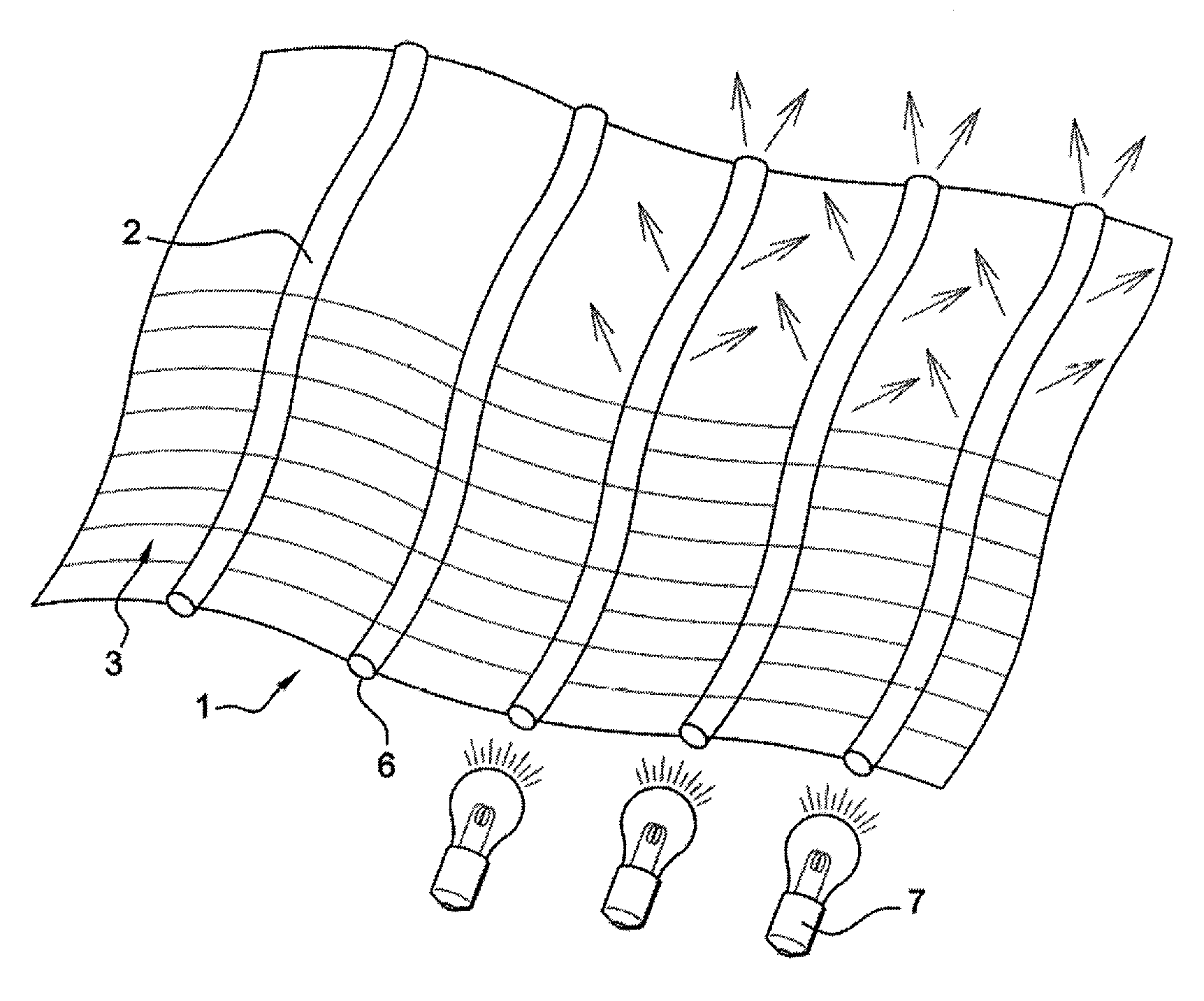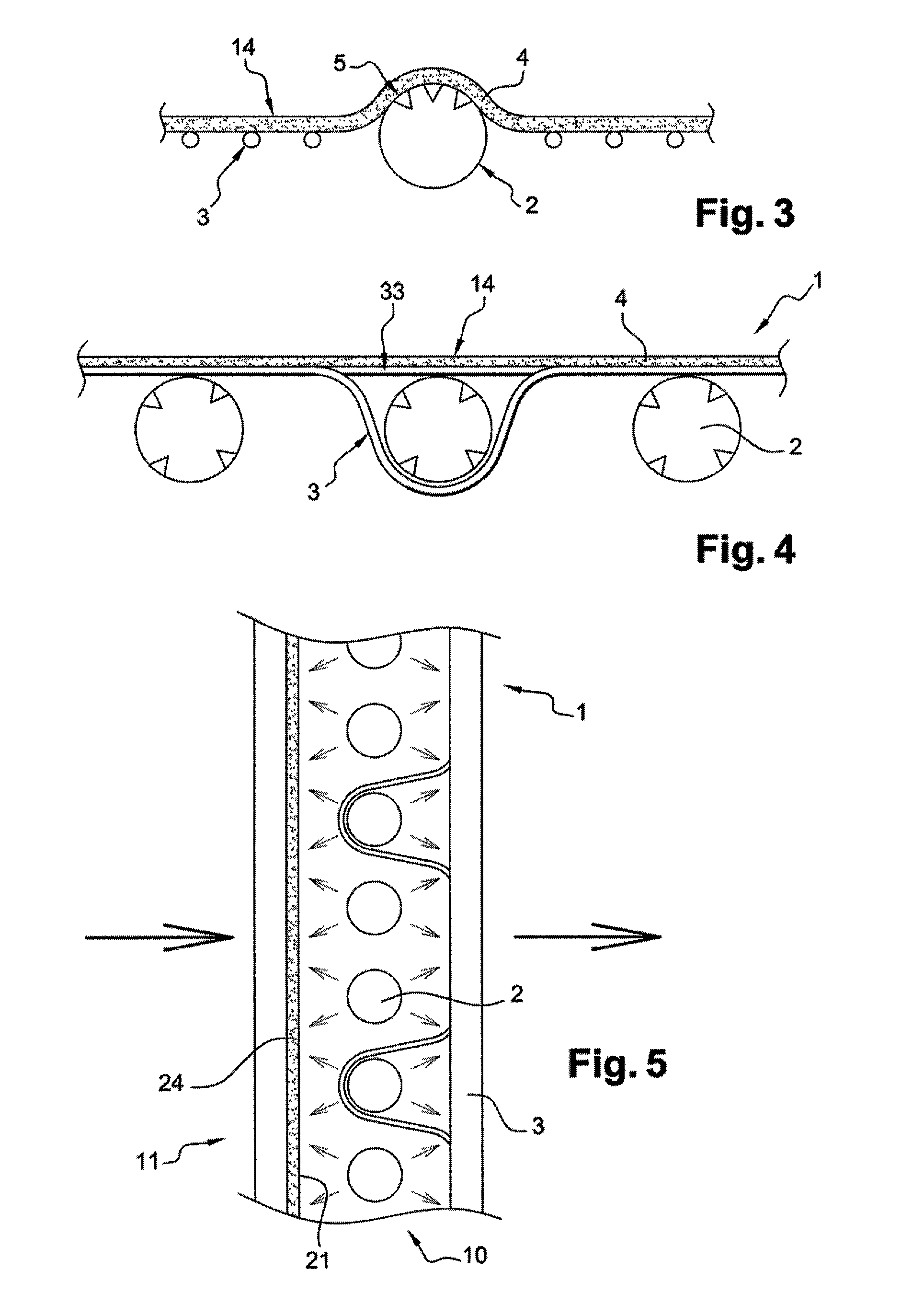Fabric web having photocatalysis-based pollution control properties
a technology of photocatalysis and fibers, applied in the direction of weaving, water treatment compounds, separation processes, etc., can solve the problems of difficult to achieve the adhesion and deposit of photocatalytic particles on the surface of optical fibres, and achieve the effect of optimum mechanical strength and optimum surface uniformity
- Summary
- Abstract
- Description
- Claims
- Application Information
AI Technical Summary
Benefits of technology
Problems solved by technology
Method used
Image
Examples
Embodiment Construction
[0038]As stated above, the invention relates to a fabric web such as that shown in FIG. 1. The fabric web (1) comprises warp and / or weft optical fibres (2) woven with warp and / or weft binding yarns (3). Such a fabric web makes it possible to distribute optical fibres (2) uniformly in a plane in which they are parallel to each other. These optical fibres (2) are treated so that they transmit light and emit light sideways from their outer cylindrical surface. This treatment of optical fibres (2) produces a plurality of invasive alterations on their surface.
[0039]In addition, one or more light sources (7) is / are positioned facing the free ends (6) of optical fibres (2) which may or may not be bunched. The light emitted sideways by optical fibres (2) can be transmitted from one edge of fabric web (1) to the other at right angles to each of these edges as well as inside the fabric web.
[0040]This layout makes it possible to activate the photocatalytic particles which are placed on one of ...
PUM
| Property | Measurement | Unit |
|---|---|---|
| Photocatalytic properties | aaaaa | aaaaa |
| Area | aaaaa | aaaaa |
| Semiconductor properties | aaaaa | aaaaa |
Abstract
Description
Claims
Application Information
 Login to View More
Login to View More - R&D
- Intellectual Property
- Life Sciences
- Materials
- Tech Scout
- Unparalleled Data Quality
- Higher Quality Content
- 60% Fewer Hallucinations
Browse by: Latest US Patents, China's latest patents, Technical Efficacy Thesaurus, Application Domain, Technology Topic, Popular Technical Reports.
© 2025 PatSnap. All rights reserved.Legal|Privacy policy|Modern Slavery Act Transparency Statement|Sitemap|About US| Contact US: help@patsnap.com



